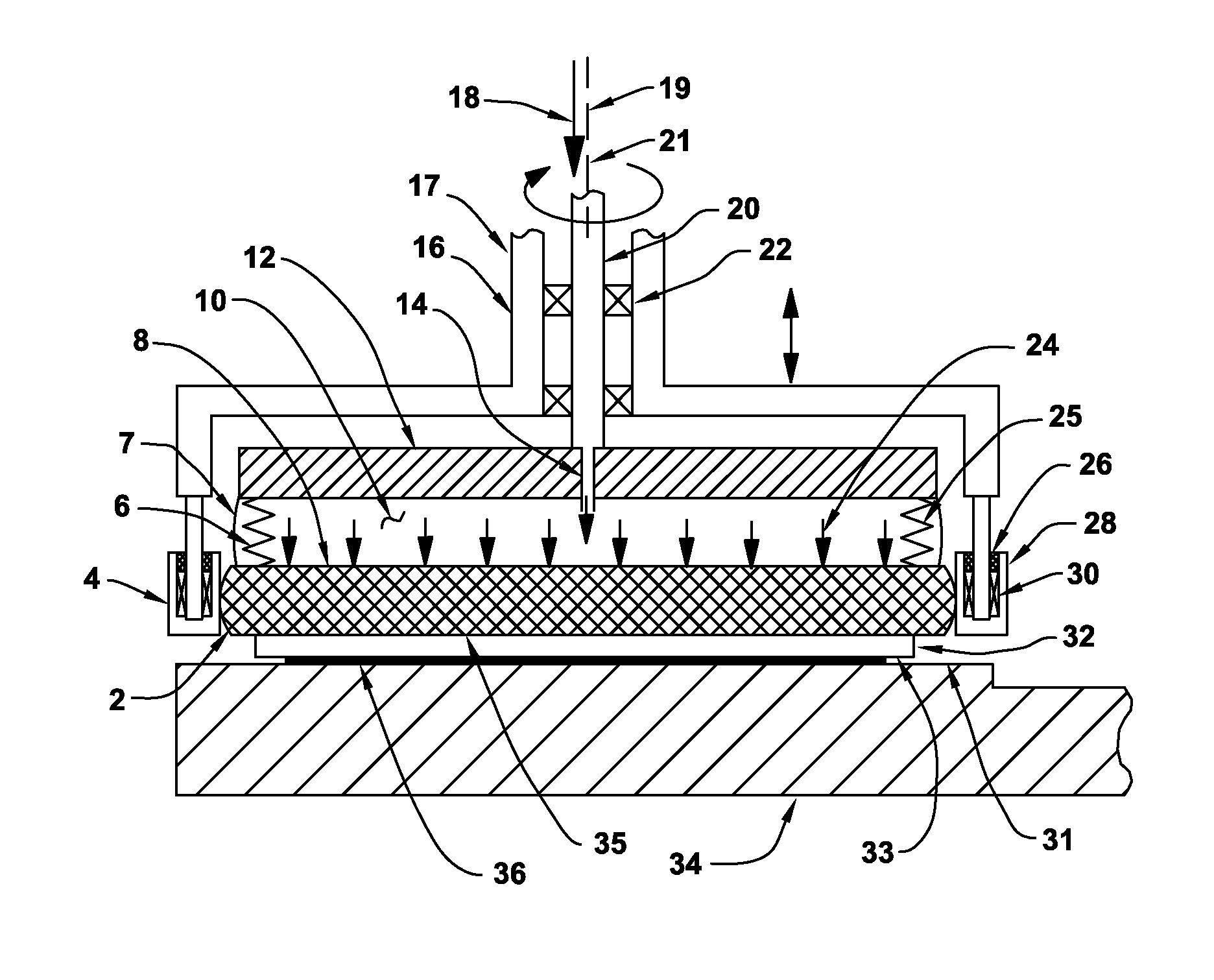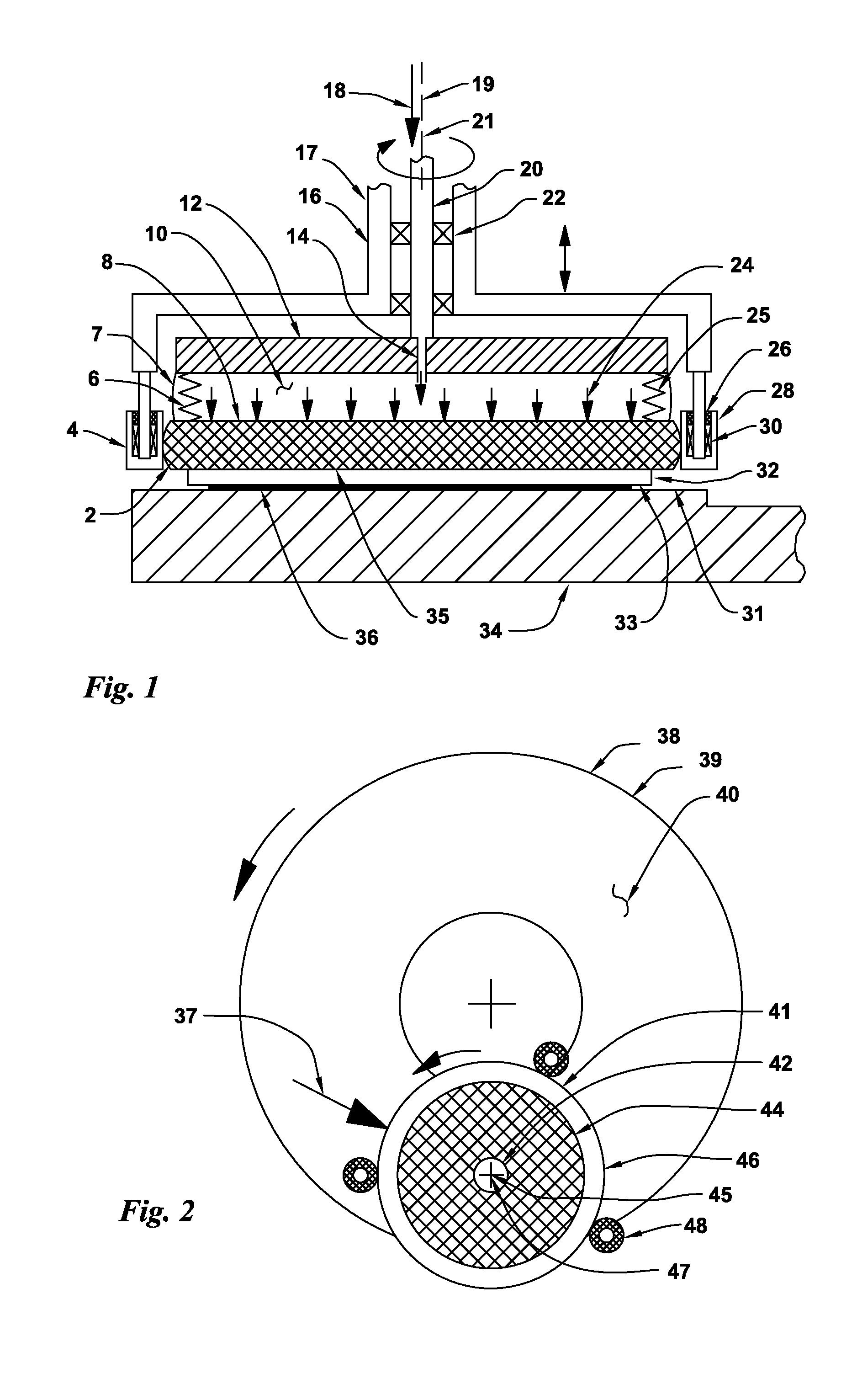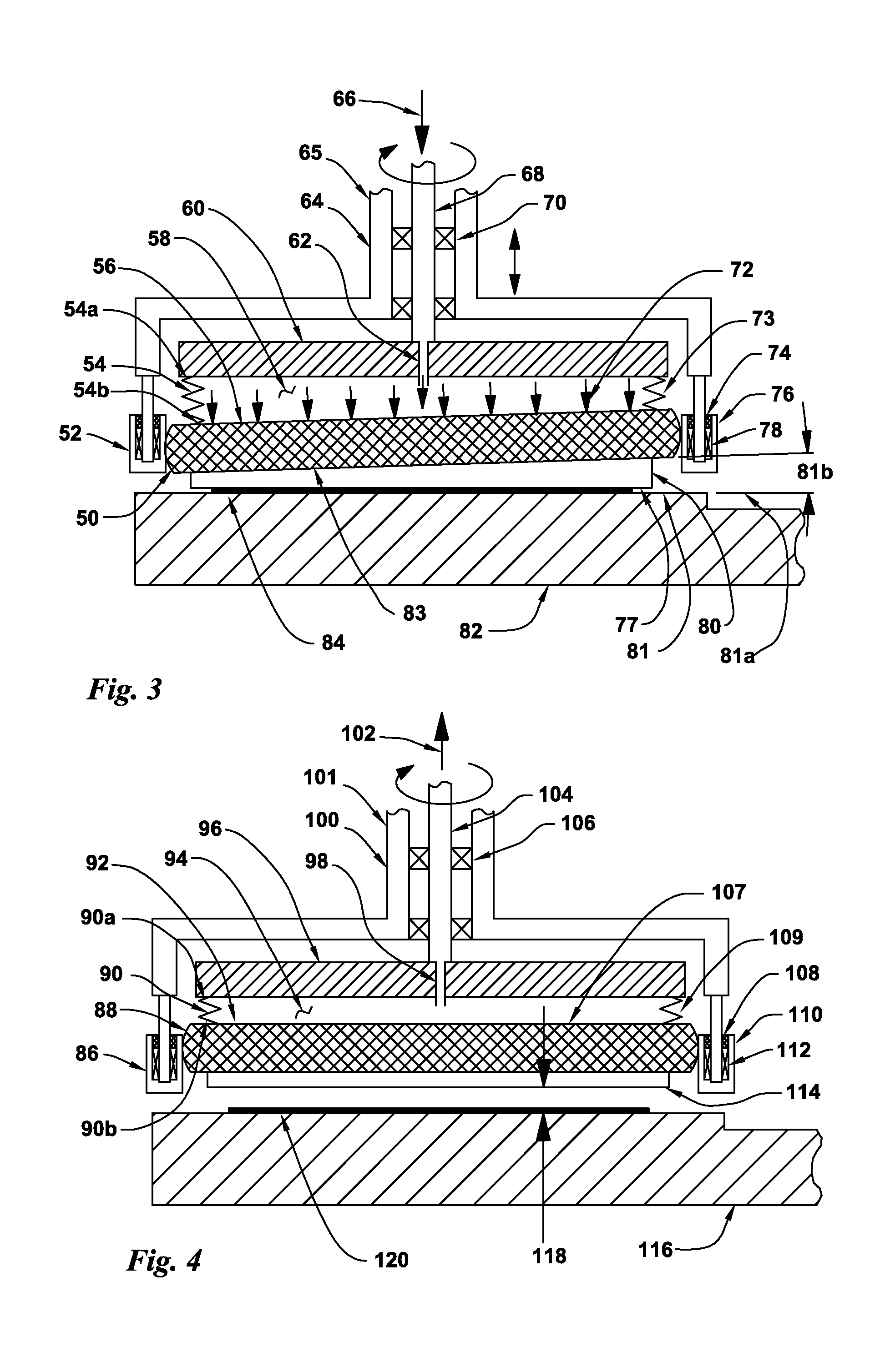Bellows driven floatation-type abrading workholder
a workholder and floatation-type technology, applied in the direction of grinding drives, manufacturing tools, lapping machines, etc., can solve the problems of abrading debris being continuously flushed from the abraded surface of workpieces, and achieve the effect of high abrading speed
- Summary
- Abstract
- Description
- Claims
- Application Information
AI Technical Summary
Benefits of technology
Problems solved by technology
Method used
Image
Examples
Embodiment Construction
[0061]FIG. 13 is a cross section view of a conventional prior art pneumatic bladder type of wafer carrier. A rotatable wafer carrier head 341 having a wafer carrier hub 342 is attached to the rotatable head (not shown) of a polishing machine tool (not shown) where the carrier hub 342 is loosely attached with flexible joint device 352 and a rigid slide-pin 350 to a rigid carrier plate 338. The cylindrical rigid slide-pin 350 can move along a cylindrical hole 349 in the carrier hub 342 which allows the rigid carrier plate 338 to move axially along the hole 349 where the movement of the carrier plate 338 is relative to the carrier hub 342. The rigid slide-pin 350 is attached to a flexible diaphragm 360 that is attached to carrier plate 338 which allows the carrier plate 338 to be spherically rotated about a rotation point 358 relative to the rotatable carrier hub 342 that is remains aligned with its rotational axis 346.
[0062]A sealed flexible elastomeric diaphragm device 364 has a numb...
PUM
| Property | Measurement | Unit |
|---|---|---|
| distance | aaaaa | aaaaa |
| distance | aaaaa | aaaaa |
| distance | aaaaa | aaaaa |
Abstract
Description
Claims
Application Information
 Login to View More
Login to View More - R&D
- Intellectual Property
- Life Sciences
- Materials
- Tech Scout
- Unparalleled Data Quality
- Higher Quality Content
- 60% Fewer Hallucinations
Browse by: Latest US Patents, China's latest patents, Technical Efficacy Thesaurus, Application Domain, Technology Topic, Popular Technical Reports.
© 2025 PatSnap. All rights reserved.Legal|Privacy policy|Modern Slavery Act Transparency Statement|Sitemap|About US| Contact US: help@patsnap.com



